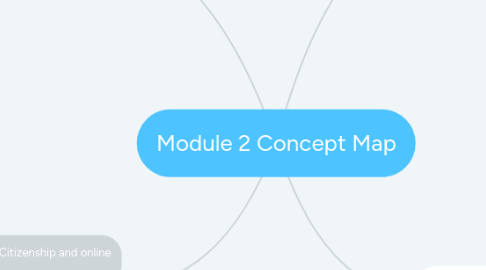Module 2 Concept Map
Grant Amannにより

1. Copyright and the validity of digital information
1.1. When checking sources remember the 3 W's
1.1.1. Who published it?
1.1.2. Why was this published?
1.1.3. Where did this source come from?
1.2. What is plagiarism?
1.3. Plagiarism occurs when someone takes another individuals work and attempts to pass it off as their own.
1.4. What is copyright?
1.5. Copyright is the legal right that governs over intellectual property.
2. Digital Citizenship and online safety
2.1. Digital Citizenship is essentially how we should act/ behave when using the internet, or interacting with others online
2.2. There are 4 main tips that everyone should remember when using the internet
2.3. 1. Never share personal information online
2.4. 2. Always choose strong, well protected password
2.5. 3. Think about what you post, because theres a strong possibility it will always exist on the internet
2.6. 4. Only download from secure, reputable sources
2.7. Digital Citizenship also focusses on using the internet and technology to better our community.
3. Theoretical Foundations
3.1. The three main perspectives
3.2. Behaviorism: Behaviorism is a theory of learning that focusses solely on objectively observable behaviors
3.3. Cognitivism: Cognitivism is a theoretical perspective that believes knowledge is actively built and learned through Personal experience
3.4. Constructivism: Constructivism is the notion that each individual constructs their own viewpoint of the world that we live in. This idea also believes that there is no place for a "standardized" education.
4. Universal Design
4.1. What is Universal Design?
4.2. Universal design is the notion that everything should be able to be equally accessed by everyone.
4.3. There are seven main principles of universal design:
4.4. 1. Equitable use
4.5. 2. Flexibility in use
4.6. 3. Simplicity
4.7. 4. Perceptible information
4.8. 5. Tolerance for error
4.9. 6. Low physical Effort
4.10. 7. Size and space for approach and use


